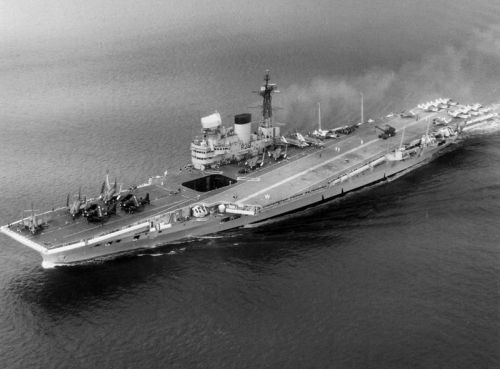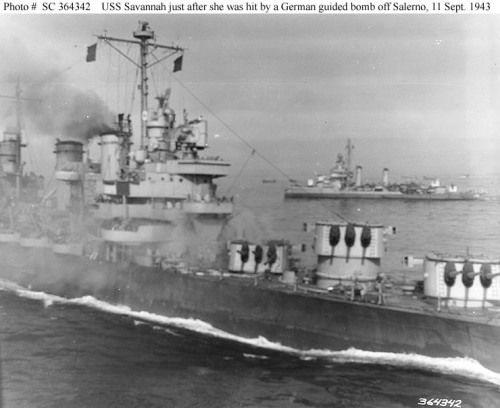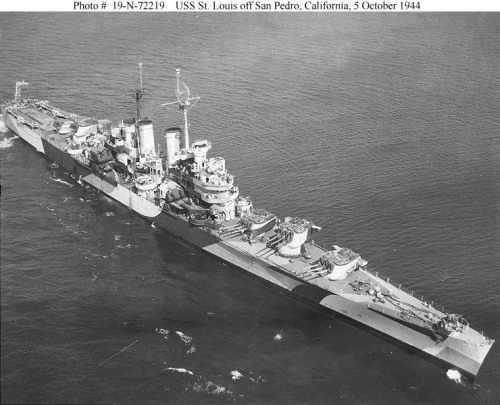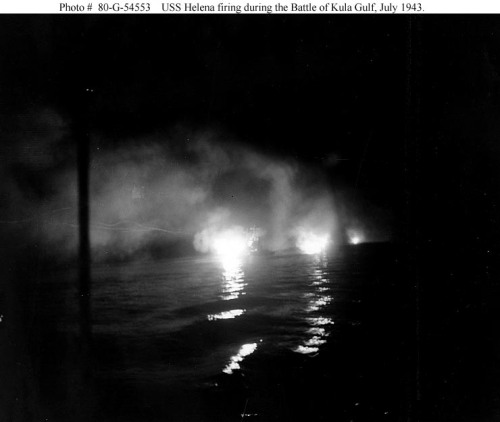 Richelieu in the 1950s © Photo Marius BAR – Toulon (France) site internet : http://www.mariusbarnumerique.fr
Richelieu in the 1950s © Photo Marius BAR – Toulon (France) site internet : http://www.mariusbarnumerique.fr
Friends of Padre Steve’s World,
I decided to take another night off from the insanity of President Trump, his response to the novel Coronavirus 19 Pandemic and the rest of the craziness. Tonight I continue writing about the battleship classes developed by the Americans, British, Italians, French and Germans in the 1930s.
The series deals with battleships built under the provision of the Washington and London Naval Treaty limitations in the 1930s. Thus these articles are about the first modern battleships that the combatants built since the end of World War One and its immediate aftermath. The Washington Treaty established limits on tonnage of battleships for the signatories, and instituted a ten year “holiday” on the production of new battleships but set no similar limits on cruisers. The London Treaties limited the size and armament of new battleships, 35,000 tons in displacement and a main armament of 14” guns. The treaty had an “escalation” clause that allowed 16” guns if a signatory was shown to be breaking the treaty.
The first three articles were about the German Scharnhorst Class, the Italian Vittorio Veneto Class, and the U.S. North Carolina Class. This article covers the French Dunkerque class and Richelieu class Battleships. The next articles will deal with the British King George V Class and American South Dakota Class. The German Bismarck, Japanese Yamato, British Vanguard and American Iowa Classes will be covered in a subsequent series.
In the 1920s the French Navy concentrated on cruiser construction. By the late 1920s it realized the need to develop a class of Fast Battleships to the large Italian Trento Class heavy cruisers and German Deutschland class Pocket Battleships. but was limited by the Washington Treaty to just 70,000 tons which meant that in order to have a number of battleships that they would have to be smaller but still mount a significant armament.
The new Dunkerque class which the French termed Fast Battleships was more like a battle cruiser. They were less heavily armed and armored than existing battleships, as well as the new classes of Battleships being developed by other navies in the mid-1930s. The Dunkerque class had a designed displacement of 26,500 tons and displaced 35,000 tons at full load. They top speed of 31 knots. Their main battery consisted of eight 13” guns in two quadruple turrets both mounted forward. This allowed all guns to fire forward during engagements to present the smallest possible silhouette to the enemy. They employed all or nothing armor protection ensuring the strongest protection over vital spaces with their armor designed to protect the ships against German 11” gunfire from the Pocket Battleships or the Scharnhorst Class Battlecruisers. They also mounted a powerful dual purpose armament as the French recognizing the need for effective defense against aircraft as well as surface ships.
Dunkerque Class:
Dunkerque was laid down on 24 December 1932, launched on 2 October 1935 and commissioned on 1 May 1937. Her sister Strasbourg followed and was laid down in 1934 and launched on 12 December 1936 and commissioned in 1939. When war was declared the two ships spent their time operating with the Royal Navy searching for German raiders and to escort convoys.
When the Germans overran France in June 1940 the ships took refuge at Mers-el-Kibir where with other French Fleet units they were the target of the Royal Navy to keep them from being taken over by the Germans on 3 July 1940. Dunkerque was heavily damaged in the attack and sank with the loss of 210 sailors after being hit by four 15” shells from the Battlecruiser HMS Hood, as well as the Battleships HMS Resolution and HMS Valiant, as well as underwater damage from depth charges from a patrol ship moored next to her which was sunk by a torpedo.
Strasbourg Escaping from Mers-el-Kibir
However, Strasbourg escaped to Toulon with 5 destroyers where she joined the bulk of the French Fleet in the so called “Free Zone” of Vichy France. She was joined by Dunkerque following the completion of temporary repairs in February 1942.
Dunkerque entered drydock for permanent repairs at Toulon and was there when the Germans occupied Vichy. Under threat of capture the Fleet was scuttled. Dunkerque was destroyed in drydock and declared a total loss. Both the Germans and Italians attempted scrapping operations and the wreck was further damaged by Allied bomber attacks.
 The Hulk of the Dunkerque in1944
The Hulk of the Dunkerque in1944
What was left of the hulk was refloated and finally scrapped in 1958. Strasbourg was scuttled by her crew, but refloated by the Italian Navy in July 1943. After the Italian surrender she taken over by the Germans, but was sunk again during an American air attack in August 1944. After the war she was refloated and used as a test bed for underwater explosions until she was condemned. She was sold for scrapping in 1955.
Richelieu Class
The Richelieu class was derived from the Dunkerque class in response to the Italian Vittorio Veneto Class. With a standard displacement of 35,000 tons and a full load displacement of 48,950 tons the ships were the largest built by the French Navy until the commissioning of the Nuclear Aircraft Carrier Charles DeGaulle.
The ships shared the layout of the Dunkerque Class with their main battery of eight 15” guns mounted in quadruple turrets forward which like the Dunkerque’s allowed them to present the smallest silhouette possible to an opposing ship while being able to employ their entire main battery. Their speed, protection and design were state of the art and comparable to their contemporaries in other navies. They were capable of 32 knots at full speed and had a cruising range of 7671 miles at 20 knots.
The main battery was spaced far enough apart to ensure that a single hit could not put both turrets out of action and each turret was internally subdivided to prevent a single hit from knocking out all four guns. The mounted 9 6” dual purpose guns in three triple turrets aft and 24 4” AA guns in 12 twin-mounts located amidships. During the war Richelieu was repaired and refitted in the US receiving 56 40mm Bofors AA guns in quadruple mounts and 48 20mm Oerlikon AA guns in place of her original 37mm cannons and 13.2 inch machine guns.
 Richelieu arrives in New York in 1943
Richelieu arrives in New York in 1943
Richelieu was laid down in October 1935, launched in January 1939 and began sea trials in January 1940. When the Germans broke through the French defenses and threatened Brest Richelieu put to sea to French North Africa and was commissioned in June at Dakar. She was damaged by an aerial torpedo launched by a Swordfish Torpedo bomber from the HMS Hermes and received emergency repairs in Dakar. On 24 September she fought an engagement against the Royal Navy at the Battle of Dakar and was damaged by two 15” shells fired by the HMS Barham and was further damaged by a misfire in one of her turrets.
Richelieu Following Repairs and Modernizing in the United States
Following the French return to the Allied camp she was sailed to New York for major repairs and modernization from January to November of 1943. Following this she operated with the British Home Fleet until March of 1944 when she was sent to the India Ocean to serve with the British Far East Fleet in operations against the Japanese until the end of the war. Following the war she took part in the initial stages of the campaign in French Indochina. She was placed in reserve in 1956 and struck from the Navy list and scrapped in 1968.
 The Damaged Jean Bart at Casablanca
The Damaged Jean Bart at Casablanca
Her sister Jean Bart was laid down in December 1936 and launched on 6 March 1940. With the German Wehrmacht approaching Saint-Nazaire she was just 75% complete. Her engines were untested engines and only one of her main battery turrets installed. Likewise, no secondary hard been installed and a few 37mm AA guns and machine guns were mounted to allow Jean Bart put to sea to escape the German advance and sailed to Casablanca. The navy attempted to ship her second main battery turret on a freighter but that ship was sunk by a U-boat enroute to Casablanca. She was at Casablanca when the Allies invaded North Africa and was attacked by the U.S. Navy when the Vichy government refused to surrender on 8 November 1942.
During Operation Torch Jean Bart was engaged by the Battleship USS Massachusetts and aircraft from the carrier USS Ranger. She was damaged by several bombs and shells from the 16” guns of Massachusetts. She engaged Massachusetts with her one working turret but scored no hits. On the 10th she opened fire on the USS Augusta and was attacked again by aircraft from the Ranger which damaged her so badly that she had to be run aground to prevent her from sinking.
After temporary repairs, she remained in Dakar for the duration of the war. Despite the requests of the French Navy to have her sent to the United States for repairs and completion, the Americans and British did not feel that they needed another fast battleship. So she remained in Dakar for the duration of the war serving as a training ship. Following the war it was suggested that she be converted to an aircraft carrier but that was rejected and she was completed as a battleship and commissioned in 1949, although not completed and placed in active service until 1955. She took part in the Suez crisis of 1956, was decommissioned in 1957 and finally struck from the Navy list in 1969 and sold for scrap in 1970.
Both the Dunkerque and Richelieu class were ships of unrealized potential due to the French surrender and the deep divisions between the Vichy and Free French governments. Had circumstances been different they might have played an important role in the Battle of the Atlantic or in the Mediterranean during the war. I wonder how the Dunkerque’s against the Scharnhorst Class would of have came out, or even an engagement of them against the older Andria Doria, and Conte di Cavour Class battleships of the Regina Marina.
Likewise, I wonder how the Richelieu Class might have done in open combat with their Italian Vittorio Veneto Class or even the German Bismarck and Tirpitz. Instead they and their brave crews had to battle the Axis powers as well as former allies in circumstances in which all the cards were against them. One of Richelieu’s 15” guns is mounted on the waterfront at Brest as a memorial to these brave ships and the men that sailed them.
These ships were very advanced for their time, but unfortunately they did not get to do what they were designed to do. They were well designed, and compared favorably with almost every class of World War II battleship. The were beautiful tragic reminders that even the best designed warships are products of their times and circumstances. Those that survive war or become obsolescent almost always are determined to be of no use, and are discarded. Some get reprieves as museum ships, but most end up scrapped or sunk as targets.
Such is the life and death of every warship.
Until tomorrow,
Peace,
Padre Steve+




















































